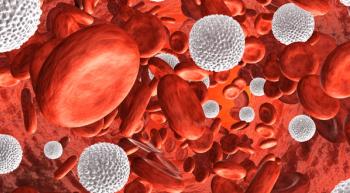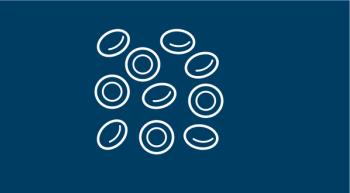
Walton Discusses the Gaps in Current Safety Protocols on Inpatient Oncology Units
AnnMarie Walton, PhD, MPH, RN, OCN, CHES, FAAN, discusses the limitations of plastic-backed pads in inpatient oncology units.
Plastic-backed pads may not be an efficacious method of reducing hazardous drug exposure, according to AnnMarie Walton, PhD, MPH, RN, OCN, CHES, FAAN.
Walton recently
Ultimately, the rate of contamination etoposide contamination was 10.4% (n = 15) both with and without the plastic-backed pad, respectively. The rate of cyclophosphamide contamination, with and without the plastic-backed pad was 51.4% (n = 74) vs 41.0% (n = 59).
According to Walton, the investigators were expecting to see much lower rates of contamination with the plastic-backed pads. Moreover, the rates of detectable contamination following discharge cleaning were “concerning.” With the plastic-backed pads, the rate of etoposide and cyclophosphamide contamination postdischarge was 10.4% (n = 5) and 50.0% (n = 24). Without the plastic-backed pads, these rates were 6.3% (n = 3) and 39.6% (n = 19).
Oncology Nursing News: Can you discuss the background of this research?
Walton: We know that antineoplastic drugs are hazardous to health care workers. Research has been mounting about antineoplastic drug residue on surfaces where we would not expect it.
In a study that our team did a couple of years ago, we found that the toilet seat on an inpatient unit was the most highly contaminated [place]. It led us to a couple of questions. We wanted to test the efficacy of plastic-backed pads, which ONS recommends, to minimize surface contamination with antineoplastic drugs on toilets. The other [question] was to understand how efficacious the current discharge cleaning method is, because, in the same study, we found drug residue in rooms where the patient had not received that particular chemotherapy agent. We were curious to know if it was left there from a prior patient.
That led to the aims of this study: to determine whether the plastic-backed pads reduced surface contamination with these drugs on toilet seats. The second [objective] was to see whether the discharge cleaning was effective in removing those residues.
Please explain the study design.
We used a crossover design [evaluating] 1 clinical unit, and we worked with them for approximately 1 year. We put them in the experimental or control condition, randomly [assigned the unit] and they were in that condition as a unit for 2 months, then we had a 1 month wash-out period, [after which] we assigned them to the opposite condition. Then we repeated the whole process again, after another 1 month wash out.
The study took approximately 1 year in terms of data collection.
What we did in each of the patient rooms was look at 3 specific surfaces: in front of the toilet, on the toilet seat itself, and then on the wall beside the toilet. We looked at 3 time points: before the patient received 1 of our 2 drugs of interest (which were cyclophosphamide and etoposide); after the patient received the drug—within the first 48 hours of receiving it; and then again, after discharge. We were interested to see whether the plastic-backed pad was effective…and then to see what the differential level of contamination was between those 3 time points.
What were the findings? Did anything surprise you?
We had 144 samples in each of the conditions. [For] our first aim, which was looking at whether the plastic back pads were effective and minimizing the exposure, we found a surprising result, which was that there was no statistically significant difference between the experimental and the control conditions. That was not what we expected. We expected that these plastic-backed pads would have reduced contamination.
As part of the study, we also observed daily cleanings and discharge cleanings, and we [conducted] qualitative interviews with nurse managers, environmental services workers, and environmental service worker managers. We understood some context around these findings. There was not great signage; identifying which patients were receiving chemotherapy, [was inconsistent]. The routine cleaning did not differ from the discharge planning procedure in terms of what was cleaned. Also, we were under the impression that the plastic-backed pads that we had designed were not in use consistently. There were a couple of challenges with the plastic-backed pads and use was probably suboptimal.
The other finding [was that] we found a statistically significant difference between postchemotherapy exposure compared with preexposure and after discharge in the case of cyclophosphamide. In the case of etoposide we found a trend in that direction, but not a statistically significant difference. Postchemotherapy the levels were much higher—as you would expect—than before chemotherapy or after discharge.
What are the overall implications for nursing practice?
We have to be aware of these potential sources of exposure for ourselves and for everyone in our health care environment.
Even after the discharge cleaning, the levels of cyclophosphamide that we found were not close to 0. That is very concerning, not only for oncology nurses, but for nursing assistants, and environmental services workers who are working with these surfaces. We need to understand more about how to get these levels lower as part of discharge cleaning.
We did find that there was a bit of a decline [in contamination], postdischarge, and before the patient received chemotherapy, so daily cleaning was part of a good strategy, but discharge cleaning alone didn’t do enough.
What are some of the greatest challenges in implementing drug safety? What are some of the most important things going forward that we still need to address?
When we look at the NIOSH [National Institute for Occupational Safety and Health] hierarchy of controls, one of the most protective things that we can do is to use engineering controls. For nurses and other health care workers, it is getting closed system transfer devices into institutions and facilities and having less of this drug in our work environment. That’s something major that [individuals] can be working on if their institutions do not have closed system transfer devices.
After that, we have to think about things [such as] education and training on safe handling—we know from our interviews that this was pretty good in this facility, [as workers] were getting annual refreshers on safe handling. [Beyond] that is [distribution of] PPE [personal protective equipment] and PPE use. There is a lot that we can do to improve upon that.
As an oncology nurse, or a health care professional, what strategies can you take to prioritize your health and safety work?
Use the PPE that’s available to you. I was talking to a nurse here at this [ONS] Congress about the fact that as nurses, we are role models for others. If they don’t see nursing assistants, for example, wearing PPE, they’re not going to use theirs either. We are the biggest health care provider on a clinical unit or in a clinic. We are modeling the culture of safety for our units; we are central to how safety is prioritized.
We are also advocates for ourselves. If you are in an institution without a closed system transfer device, it is incumbent upon us to know the data and to ask.
Reference
Walton A, Sung A, Bush P, Spasojevic I, Myers J, Jin H, Powell M. Examining occupational exposure risks and the efficacy of toilet seat covers and routine discharge cleaning in minimizing antineoplastic drug contamination. Presented at: 48th Annual Oncology Nursing Society Annual Congress; April 27-May 1, 2022; San Antonio, TX. Accessed June 20, 2023.
Newsletter
Knowledge is power. Don’t miss the most recent breakthroughs in cancer care.
















































































